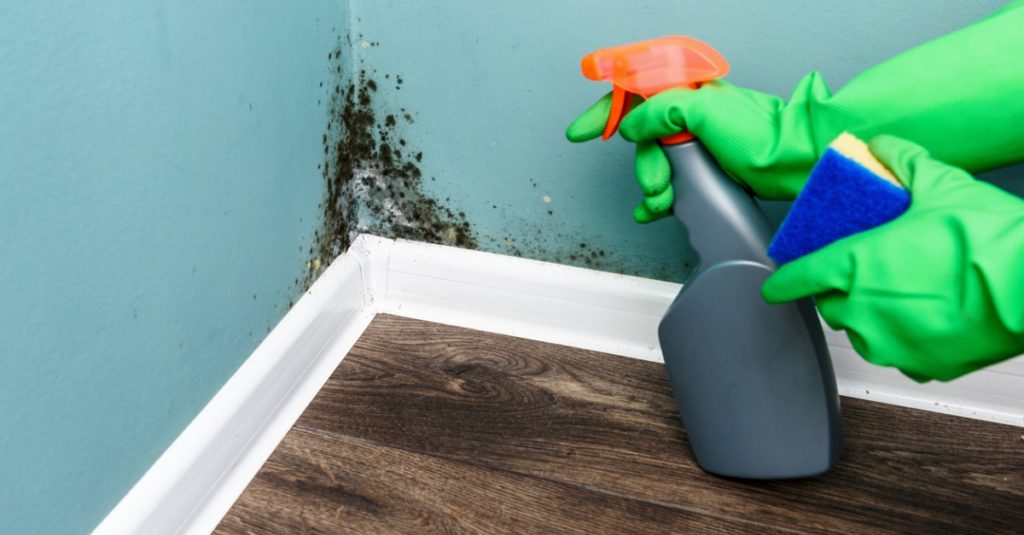
Improper or incomplete removal of mold can lead to thousands of dollars in repairs and mold remediation long after the water damage is repaired, so you will often be better off leaving this job to the pros.
- Don’t Delay – time is of the essence – Mold and mildew can develop as soon as 24 to 48 hours, so acting immediately to clean things up and get your house back to its dry state is critical. The sooner you take action, the more you can contain potential mold growth and avoid the associated health risks. If more time has elapsed then you need to start thinking about mold remediation in addition to the water cleanup.
- Stop the Source of the Water – Find the source of the water that is damaging your home or other potential causes of unwanted water. Remember, water conducts electricity and water coming from outside may contain bacteria, so coming into contact with it could be dangerous. When a pipe has burst, turn off the main valve if it is safe to do so, and call a local emergency plumber.
- Clear Out Standing Water – Use a wet-dry vacuum, buckets, mops, sponges or a sump pump to remove standing water. Protect yourself with the right gear before coming into contact with contaminated water. It is recommended to use safety glasses, gloves, boots, long sleeves, long pants, and a mask (like an N-95 respirator). Check outside your home as well for groundwater or water collecting against your foundation. Water can seep into your home and lead to mold growth.
- Remove Damp Items – Remove, dry out, and clean damp items, such as clothes, books, furniture, toys, etc. and store them outside until your insurance can review the damage. Otherwise, these items can stay moist and possibly harbor mold. Look for porous items that may have gotten wet, including carpeting, rugs, wallpaper, drywall, ceiling tiles, insulation, clothing, paper, wood (including furniture), and food. Some building materials like drywall, ceiling tiles, wallpaper, insulation, and carpeting will have to be replaced, or you run the risk of mold growing in and behind them and spreading. In addition, removing wet items will help reduce the overall humidity in your home, which can cause mold and mildew.
- Clean All Surfaces – Sanitize hard surfaces, such as baseboards and walls, with a cleaning solution like a plant based antimicrobial.
- Dry Out all wet materials and structure in the affected area – if the humidity level outside is lower than the inside of the house, open all windows and doors, set up several fans (aimed towards windows and doorways) to send humid air out, and run dehumidifiers for at least a few days. Look for a humidifier with a larger tank that will collect 60 or more pints of water per day, so you won’t have to empty it as often. Be on the lookout for musty smells that are indicative of mold.
- Hire a Professional – Mold can hide in air ducts, behind walls, and underneath carpeting. If you think your HVAC system has been affected, don’t turn it on. Call a pro to inspect and clean your unit. If water damage or a mold problem feels out of control, it’s best to hire an IICRC certified service provider near you to evaluate the situation and quickly get things back to a normal, drier state.
